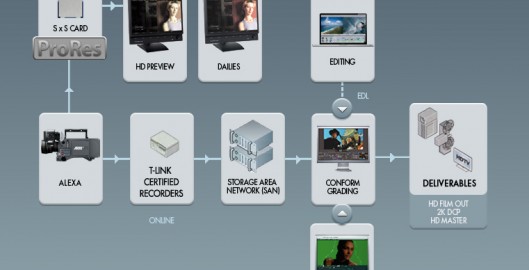Instructional
Cinematography for Directors: The Crew
On 17, Jan 2014 | One Comment | In Instructional | By Colton Davie
This post could just as well be addressed to producers. While most filmmakers understand on a broad scale the different crafts that come together to make a film, like acting, production, art, cinematography, editing, music, and effects, it is not uncommon that as a department head I find myself having to explain to a director or producer the roles of the various crew members that make up my department and their importance to the project.
Read more…
Intro to Workflow: Safely Carrying Your Baby from Set to Screen
On 30, Sep 2013 | One Comment | In Instructional | By Colton Davie
When shooting digitally, especially on a tight budget, there is a common temptation to shoot first then figure out post later. With the low perceived cost of recording data and the wide availability of affordable tools to process and work with such data, there is a mindset which suggests that with a little Google searching one can quickly figure out how to get from A to B. While it is possible to figure things out, it will likely end up costing a significant amount of time and potentially risk compromising the quality of the material. The shoot first-figure the rest out later mentality is a dangerous one in all areas of production and has resulted in many costly unfinished and unfulfilled projects.
Read more…
Cinematography for Directors: Focal Length (Part 1)
On 14, Sep 2013 | 4 Comments | In Tests, Instructional | By Colton Davie
Like the other departments of film production, cinematography is a specialized field. As cinematographers, we are required to fully grasp and utilize concepts and tools that may never be completely understood by other members of production. For instance, a director may never need to know how to read a waveform monitor, or the difference between griffolyn and ultrabounce. However, the choices the cinematographer makes regarding exposure, or his choice of bounce, or the myriad of other technical decisions ultimately have narrative and emotional impact on the film. Therefore, it is wise for directors to have a basic grasp of cinematographic techniques—as well as the other aspects like production design, sound, and editing—so that they can confidently and deliberately work with their collaborators to craft their vision.
With that in mind, I’ve set out to write a series of articles on foundational concepts of cinematography, for directors. I intend to approach these concepts from a story perspective as opposed to an overly technical one. My goal is to help new directors get up to speed, or provide a refresher for those that may have more experience, so that they can more effectively communicate with their cinematographer and better craft a film that is in line with their vision.
Read more…




Recent Comments